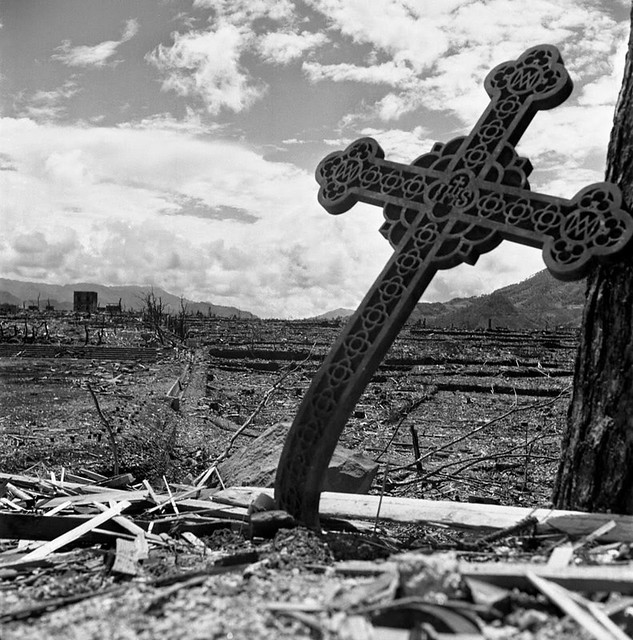I found these 2 articles really fascinating, especially the story of Dr Takashi
Here's a quote from the first article....
Nagai was at work at the hospital on the beautiful morning in August when the bomb was dropped. He survived because he happened to be in an inner room of the hospital which provided some degree of protection. Nagai was trapped and injured; he was eventually dug out of the rubble by a co-worker. He finally made it outside and into a nightmare, literally a living hell.
I read the story of what he encountered that day with a sense of horror — the descriptions of the suffering of the people reminded me of the most ghastly descriptions of hell I’d ever imagined. To perish immediately was a great mercy. Despite his own serious injuries, the doctor immediately threw himself into doing all he could do to help the dying who were all around him — somewhere in the vicinity of one hundred thousand, half of which died that day, and half of which lingered a bit longer before succumbing to death.
It was several days before Takashi was able to leave the ghastly scene and make it to his home. He found what remained of his beloved wife in the kitchen — a few bone fragments and her rosary beads. His two young children had been spared — they had gone on a hike to the mountains with their grandmother that day.
The story grows even more remarkable in the months to follow, as Takashi refuses to give in to bitterness and instead forgives and becomes a great preacher of peace. He preached to the survivors of the church there and told them that the reason the bomb had fallen on Nagasaki was so that the body of Christ there could absorb the wounds, bear the sins of the world, end the cycle of violence, and not return evil for evil, but instead forgive. He became a great spiritual leader of the Christian community in Japan.
Very soon, his radiation sickness made him an invalid forced to lie on a mat in a one-room hut that his friends constructed for him. He became famous in Japan — a prophet, a revered holy man who spent his days in prayer, writing books, and receiving the many guests who came from around the world to meet him, even Helen Keller! A popular movie was made of his life — The Bells of Nagasaki, telling the story of how he helped organize the salvage of the cathedral bell found buried in the rubble and worked quickly to get it hung so that it could ring once again on Christmas Day — a symbol of hope and endurance for the believers there. He published several books, some of which are available in English. He lived much longer than anyone expected, but finally died of the radiation sickness in 1951."
"The story grows even more remarkable in the months to follow, as Takashi refuses to give in to bitterness and instead forgives and becomes a great preacher of peace. He preached to the survivors of the church there and told them that the reason the bomb had fallen on Nagasaki was so that the body of Christ there could absorb the wounds, bear the sins of the world, end the cycle of violence, and not return evil for evil, but instead forgive. He became a great spiritual leader of the Christian community in Japan."

No comments:
Post a Comment